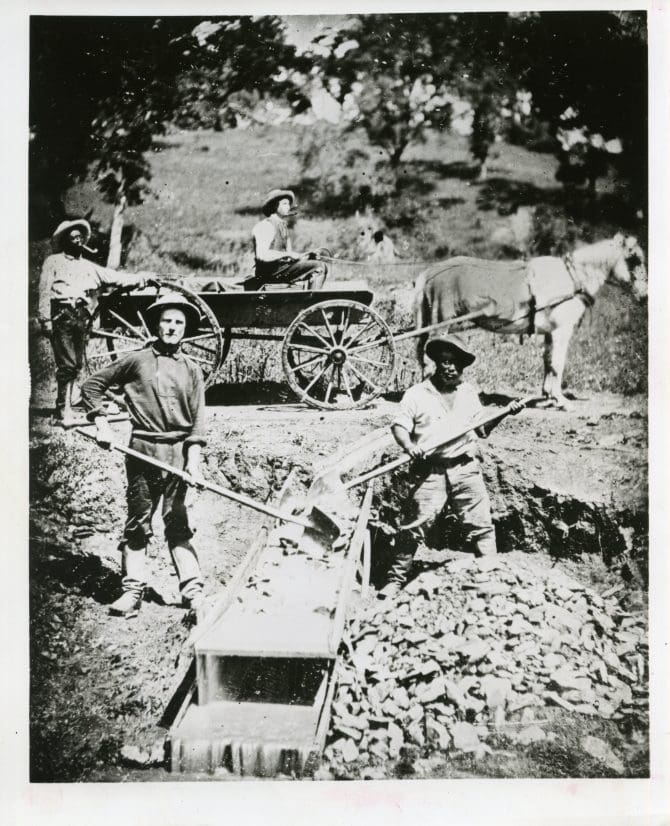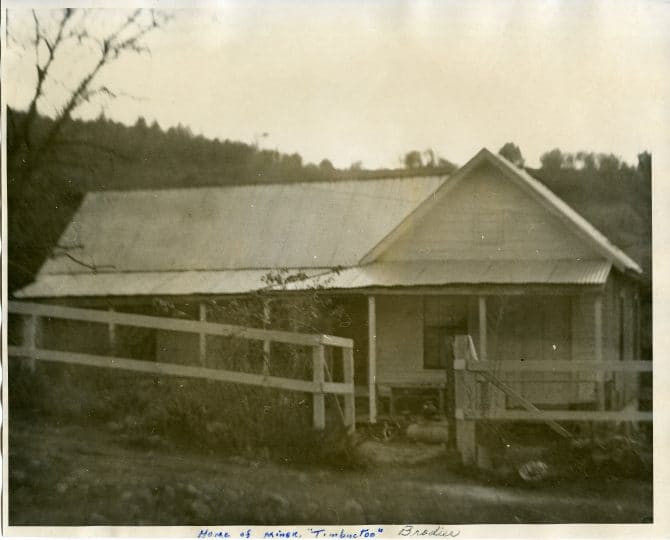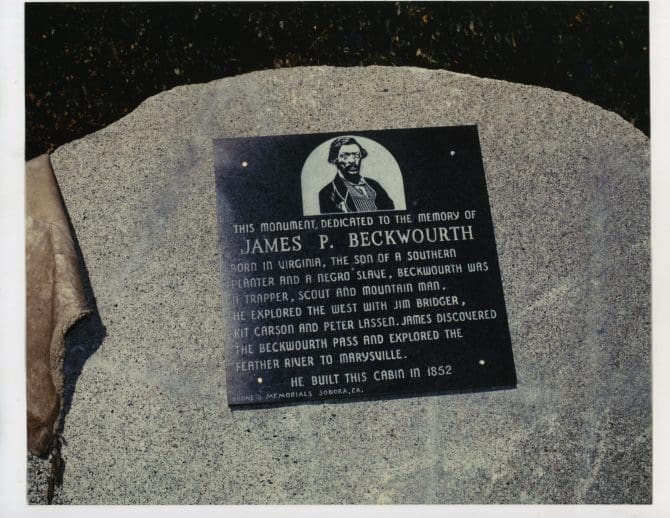
Prepare for a visit to AAMLO with these special topic resource guides.
This resource guide is intended to help users locate holdings at AAMLO related to African Americans and the California Gold Rush. See also the resource guide on Slavery in California for material related to enslaved African Americans forced to migrate as part of the California Gold Rush.
It highlights holdings in the following areas:
● Selected Library Material at AAMLO
● Selected Archival Collections at AAMLO
Other collections may contain relevant materials. Please contact AAMLO (aamlo@oaklandlibrary.org) with any questions or to schedule an appointment to view materials in person.
Selected Library Materials

Mining for Freedom : a Black History Meets the California Gold Rush by Sylvia Alden Roberts
Blacks in Gold Rush California by Rudolph M. Lapp
California's Black Pioneers a Brief Historical Survey by Kenneth G. Goode
Trailblazers : African Americans in the California Gold Rush by Awele Makeba
Shadow and Light An Autobiography by Mifflin Wistar Gibbs
Life and Adventures of James P. Beckwourth by James Pierson Beckwourth
Selected Archival Collections
African American Museum & Library at Oakland Vertical File Collection. Includes maps of California gold camps and mining claim notices, research writing on "Black men in the gold mines of California," "Black pioneers of Yuba County" "An historical overview of the development of Sacramento's Black community," and an 1849 handwritten journal of a passenger aboard the ship Tahmaroo leaving New York bound for San Francisco [27 pp. manuscript].
Flood Family Papers. Elizabeth Thorne Scott Flood (1828-1867) emigrated to California during the Gold Rush and settled in Placerville with her husband, Joseph Scott, who worked as a gold miner. After his death, she moved to Sacramento and founded the first public school for African American students in the state. Her second husband, Isaac Flood (1816-1892) had bought his freedom in South Carolina and moved west to California during the Gold Rush where he worked as a laborer and tradesman. Elizabeth Thorn Scott and Isaac Flood married in 1855 and were among the earliest and most prominent African American families to settle Oakland, California. [View online]

East Bay Negro Historical Society Records. Includes documentation related to exhibits on “Miners, merchants, mayors: The East Bay Black community at work, 1849 -present” and "Blacks in California Gold Mines."
Gibson Family Papers. Lucinda Ray Gibson was a descendent of Nelson Ray (1820-1882), who obtained his freedom from enslavement in 1864 and came out to California to mine for gold. Through his profits, Ray acquired enough money to pay for his wife and children's freedom and settled in Placerville, where he worked as a carpenter and blacksmith.
Mayme C. Netherland Collection. Mayme (Mary) C. Netherland (1877-1973) was born to Oscar Thomas Jackson and Mary Ellen Jackson (née Scott) in Oakland, California. Her maternal grandfather, John Scott (1815-1916), was born enslaved in White Sulphur Springs, West Virginia. At the age of 23, he escaped and joined a band of Cherokee Indians. During this time, he helped other enslaved persons escape along the Underground Railroad. After two years of freedom, Scott was caught and sold to Lieutenant Hoskins of the U.S. Army. Scott served alongside Hoskins in the Mexican-American War and was a member of John C. Fremont’s 1844 expedition to California. At the end of the expedition, Scott escaped again and found a rich gold mine in Calaveras County. [View online]
African American Museum & Library at Oakland Photograph Collection. Includes one photograph of Edmond Edward Wysinger (1816–1891). Born enslaved and forced to migrate to California during the Gold Rush, Wysinger purchased his freedom using savings from mining. In 1890 he filed a historic lawsuit against the Visalia School District for denying his son, Arthur Wysinger, admittance to the public school. Wysinger vs. Crookshank was the first court caking made it illegal for California public schools to ban African American students. Also included are photographs of the Wysinger children, Arthur Wysinger and Martha Wysinger.
Thelma Gibson Radden Papers. Nurse and educator Thelma Gibson Radden (1903-2004) was born on February 18, 1903 in Oakland, California to Charles Nelson Gibson and Maude Esther Gibson. She was a fourth-generation Californian with her family tracing their roots in the state to 1864, when her great-grandfather Nelson Ray (1820-1882) moved to Placerville, California from Lexington, Missouri. Born a slave on the Verlinder Ray Plantation, he was freed following the death of his slave owner and he purchased the freedom of his wife, Lucinda Ray, and their three daughters after arriving in California. They were reunited as a family in Sacramento in 1877.
Hackett Family Papers. Includes one undated photograph of a miner's cabin in Timbuctoo, California. [Online item]
Miriam Matthews Photograph Collection. Includes one photograph depicting Black miners extracting gold at Spanish Flat, El Dorado County, circa 1852.

Additional Information
Search the library using the catalog.
Consult AAMLO's finding aids in the Online Archive of California.
We are working to create new resource guides. Have an idea for a new guide? Contact us at aamlo@oaklandlibrary.org.
